It always gives me a perverse sense of national pride to see a Brit abroad behaving in an archetypical eccentric fashion. Parked beside us at Camping Lamego were an elderly English couple, with whom we got on very well. This morning though, I was delighted to see the man appear from his caravan dressed in shorts, dark patterned socks pulled up mid calf and brown slip on shoes – excellent. To cap it off, as they sat down to have breakfast outside each of them had a linen serviette rolled up in a personalised serviette ring. Maintain standards at all possible times!
Before we set off for the day I received some alarming news – the winery next door is closed on a Saturday! My plan to stock up Basil’s cellars was up in smoke.
Today we had a shortish drive into the Beira Alta, the high barren plateau which lies on the Portuguese Spanish border. From a driving perspective this was a big improvement, because the land is fairly unproductive; villages are therefore further apart; and therefore Basil got a chance to stretch his legs a bit. Sat Nav threw his usual bit of excitement into the mix to keep me on my toes, by sending us through a couple of tiny villages, with cobbled streets barely big enough for Basil, but generally it was our best driving day in Portugal.

The Beira Alta
Before we reached the Beira Alta we passed through an area where the main crop seemed to be apples. I had always associated apples with temperate climates, but because the Beira Alta is at 2,500 feet, perhaps the climatic conditions are suitable for such fruit.
Our target for the day was Trancoso, a fortified old town fairly near the Spanish border. Do not worry, as far as I can ascertain it has never claimed to be the birthplace of Portugal!
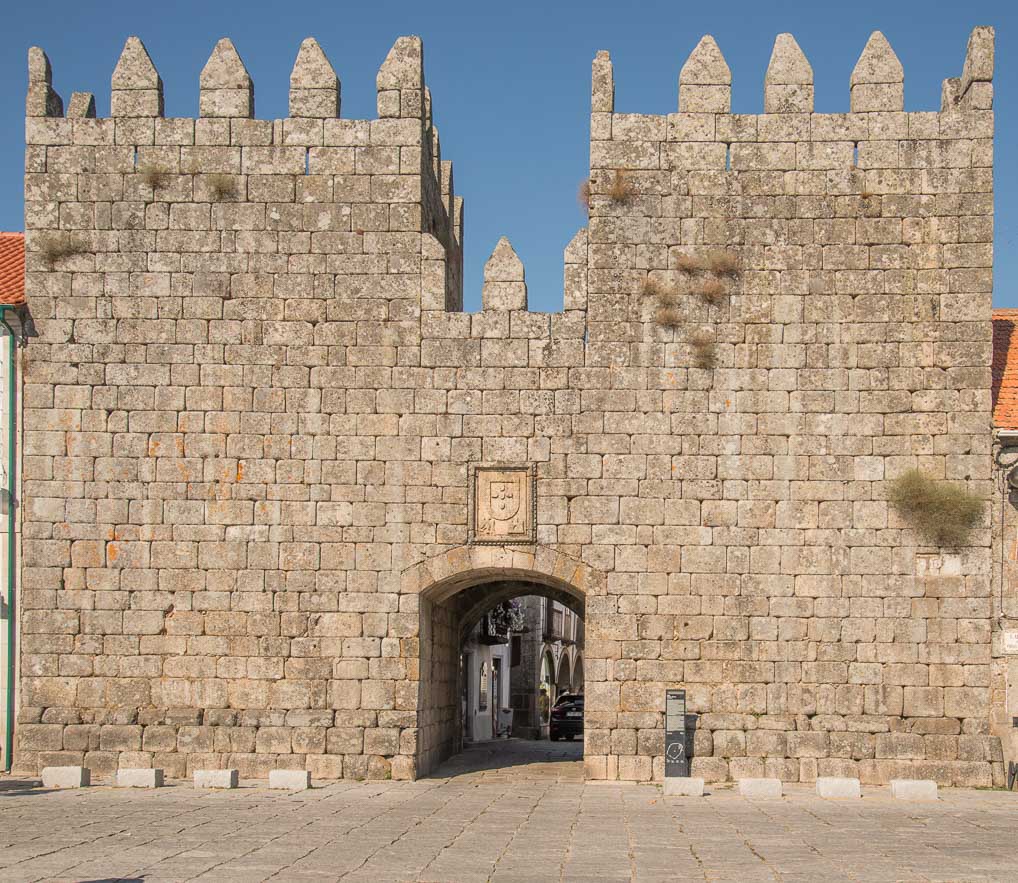
Town Gates
Either Trancoso is very popular in the summer or they have big ambitions, because we parked up on a huge car park, which was free and virtually empty (40.775482, -7.351395).
After lunch we wandered around Trancoso’s impossibly quaint old town, still encircled by medieval walls. One of the unique historical features of Trancoso is that it had one of Portugal’s largest Jewish communities, up to 700, until they were expelled by the Inquisition in the late 15thCentury. Before that the Jewish community lived fairly peacefully with both their Christian neighbours and before that the Moors.
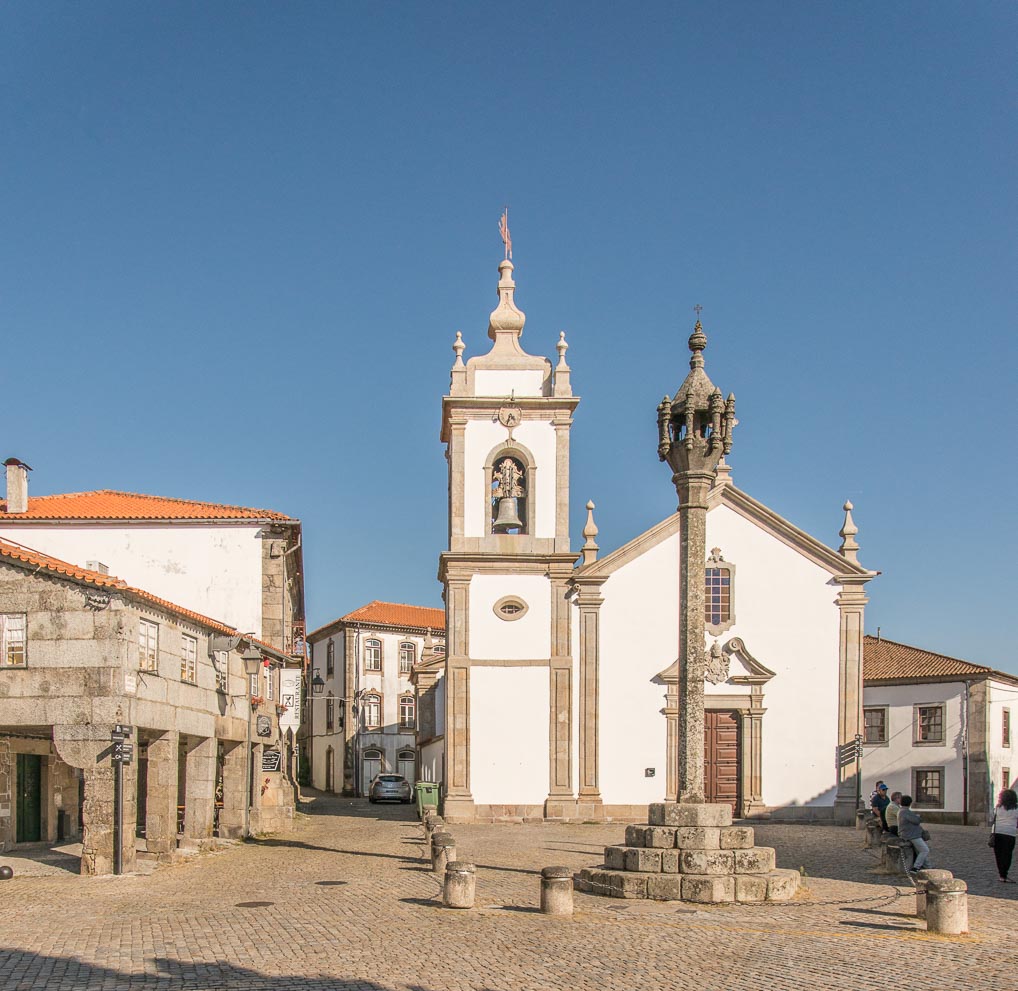
Main Plaza
There is an area of the town associated with the Jewish community, a house which supposedly has a sculpture of the Lion of Judah on its front and more recently the town has built a new Synagogue and a Jewish interpretation centre. It is perhaps no co-incidence that the only tour parties in town were speaking Hebrew.

House of the Black cat where you may be able to see a supposed Lion of Judah
As with all these fortified towns there was a fairly complete castle, which had been built by the Moors, conquered by the Christians in the 11thCentury and then had exchanged hands between them a few more times before the Christian Reconquest finally won out.
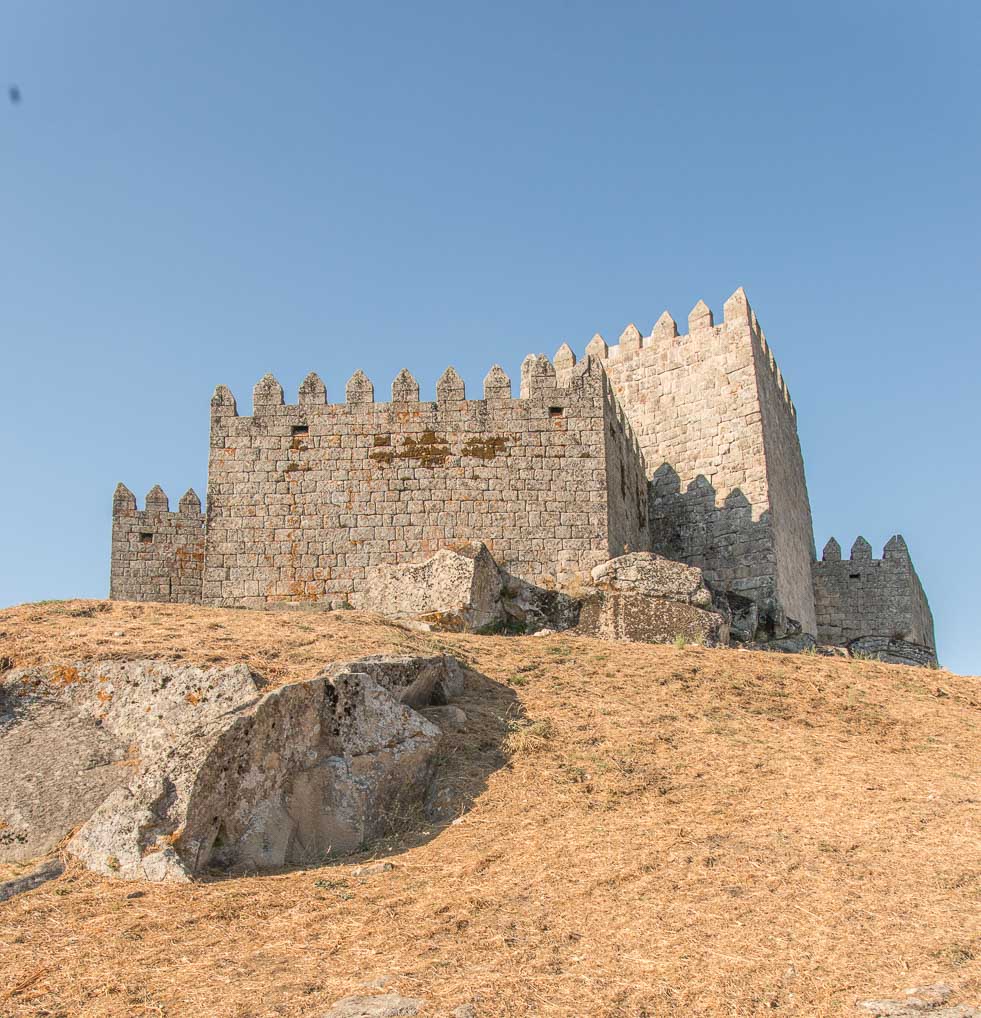
Trancoso Castle
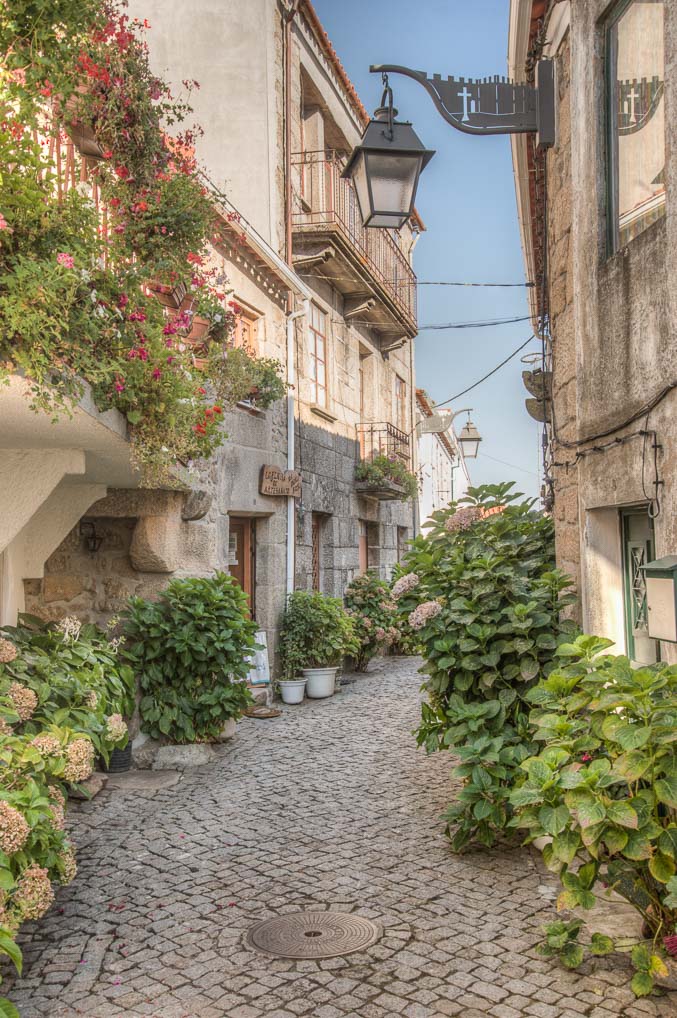
Street Scene
There is not a great else to see in the town, but it is a very peaceful pretty place to spend a couple of hours. We are going to venture back into the town to see if we can finally eat the Portuguese speciality of Salt Cod, before we leave the country, but the general lack of tourists may mean the restaurants remain closed. Salt cod is for sale everywhere. Customers decided how much they want and then the dried fish is sliced to order on a special guillotine. Apparently much preparation goes into changing this brick like lump into something edible and there are claimed to be over 300 Portuguese recipes for how to serve it.

Door of the Day
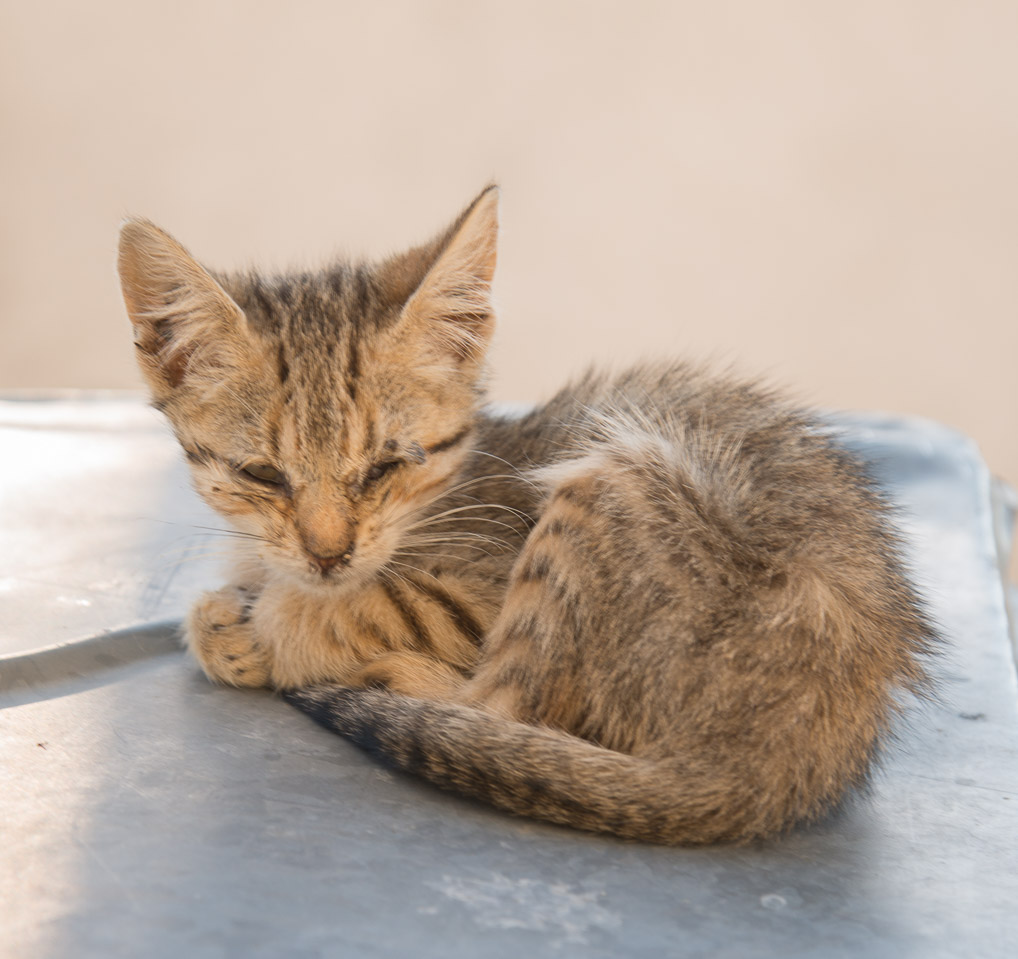
A cute kitten on a dustbin
